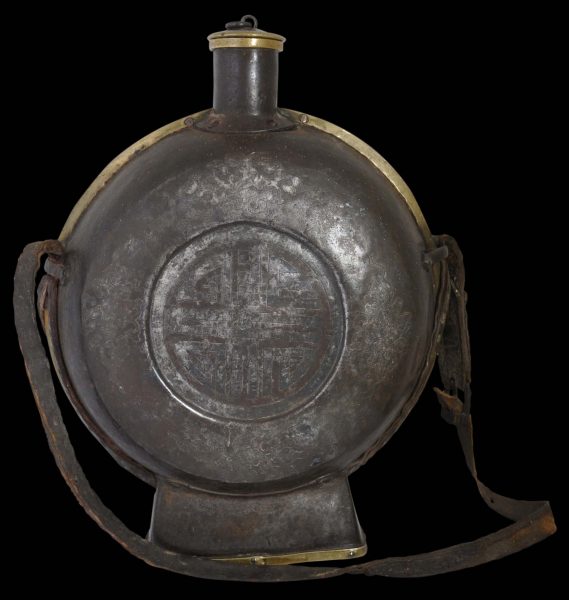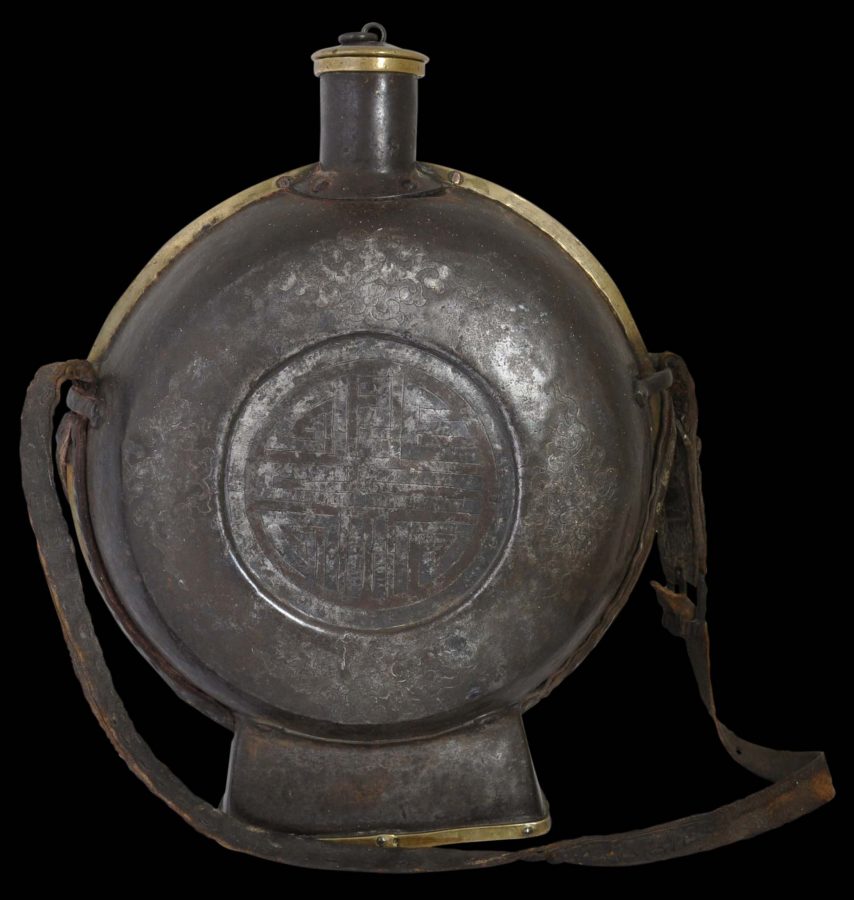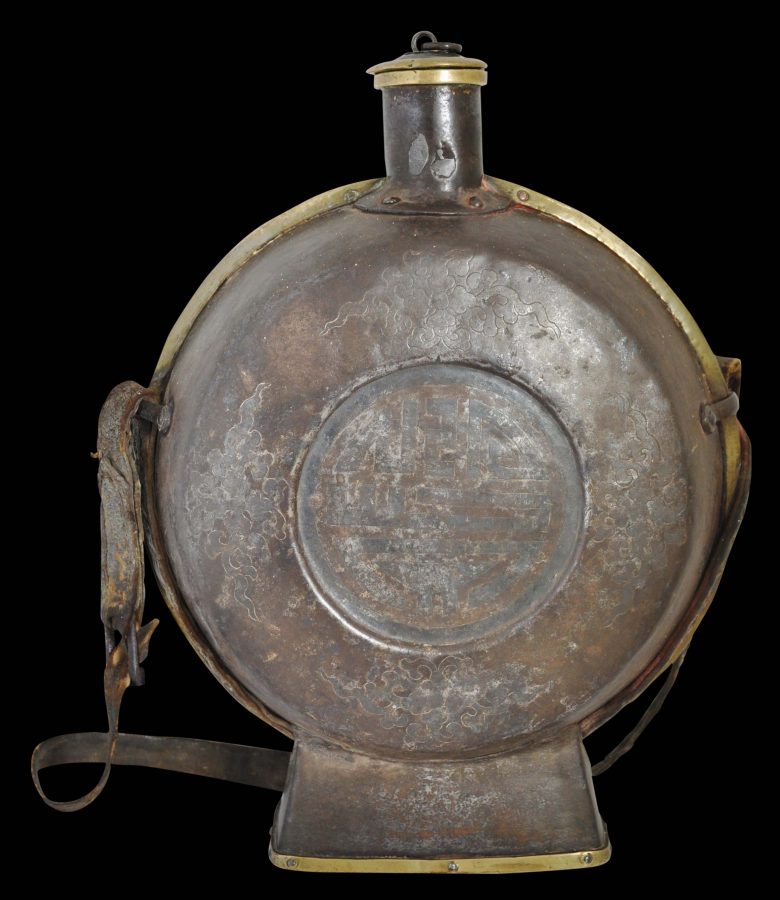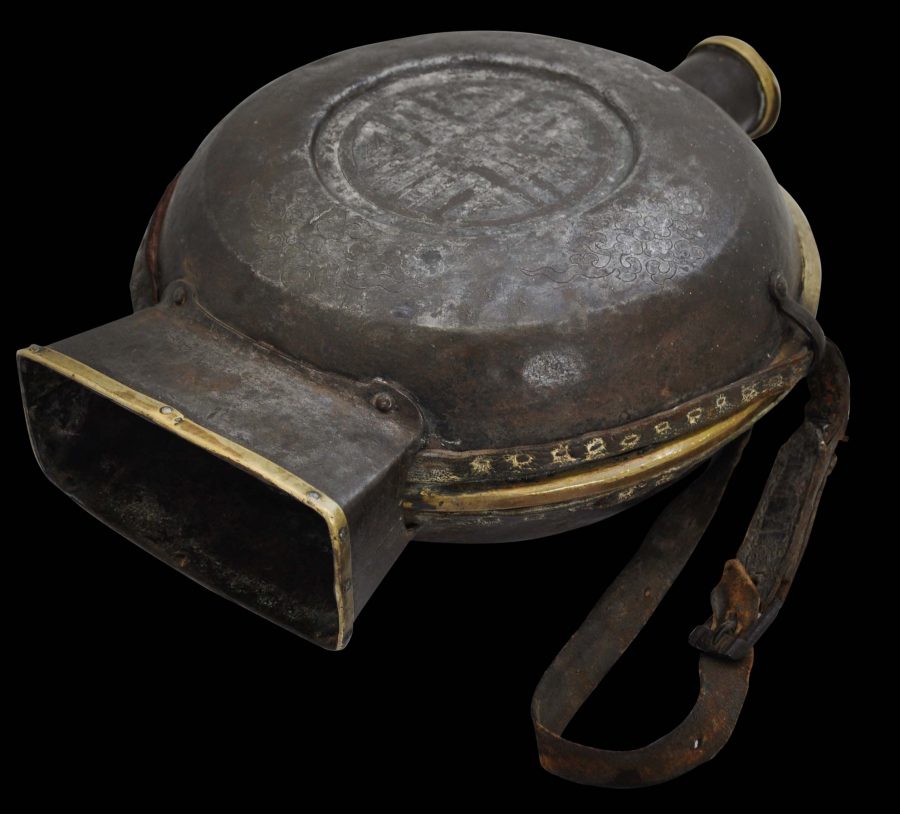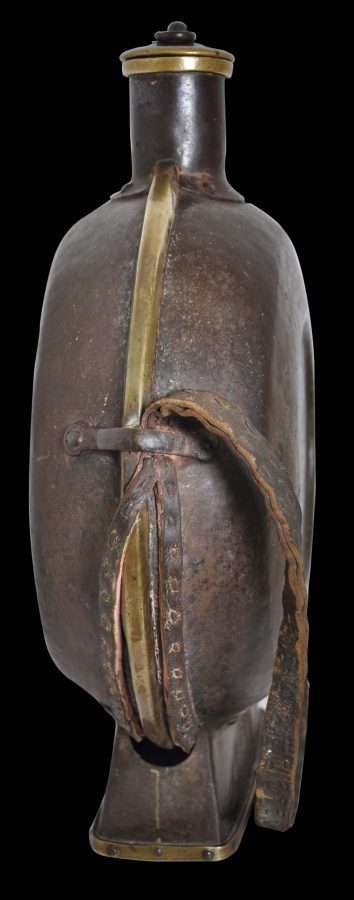This iron flask appears to be modelled after Chinese porcelain moon flasks, and/or the ‘pilgrim’ flasks used by nomads. Such flasks are believed to have been made in Chamdo in Eastern Tibet, which was a famous metal working centre. The sides are flat, originally to allow such flasks to be strapped to the side of a pack animal. It has brass mounts and both sides are over-laid in silver – a central mandala or ‘long-life’ motif surrounded by stylised, swirling clouds – although much of this has worn away.
The design is achieved by lightly scoring the iron surface of the flask and then hammering on the silver, which is a softer metal, onto the surface. (Today, the process is known as damascening, after the city of Damascus, which was once renowned for this technique.)
The flask retains its original stopper which also has brass mounts. What is likely to be the original leather strap is also present.
The flask has several old, small mends with solder where the iron appears to have worn through. Overall, it is a good example of a utilitarian and yet decorative object.
References
Reynolds, V., Tibet: A Lost World: The Newark Museum Collection of Tibetan Art and Ethnology, The American Federation of Arts, 1978.


